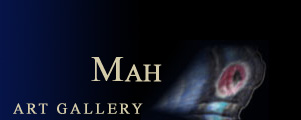| |
Biography
Mehdi Hosseini was born in Kashan, a city south of Tehran, in 1943. He went to the Tehran High School of Fine Arts and left for New York in 1962. There he studied painting and print making at the Chicago Institute of Art, from which he graduated in 1968. He studied the same course at the Pratt Institute, graduating in 1970.
Mehdi Hosseini is an artist who both draws and paints. Generally speaking, there are few artists who can express their mentality and experiences through drawing simple lines in a novel way. Traditionally, most artists leave the main bulk of their creative ideas in the abstract instead of giving them concrete visual expression. Hosseini, on the contrary, is one of the few artists who manages to bring along everything in his drawings yet still encapsulates his ideas concisely.
Hosseini's drawings bear a catastrophic and timeless essence, which presents itself in the dramatic situations that encompass his figures. These forms mix with the dynamic atmosphere surrounding them in such a way that one may conclude that the dynamic domain of thinking and matter has united to give them birth. Hosseini's drawings create an air of premonition, prognosticating humankind's pains and sufferings. He endeavors to give a soul overwhelmed with ennui a semiorganic form, but the resulting human figure has been consecutively reduced to a largely abstract image. Hosseini's drawings are evidence of all that contemporary humankind has undergone, and all that he illustrates is a representation of inevitable realities.
The subjects of Hosseini's paintings are the landscapes and objects that humans encounter in their everyday lives. Yet these subjects are presented without emotionality or sentimentalism. They are employed, instead, to achieve a balanced aestheticism compatible with the essence of authentic painting.
Line is an important element of Hosseini's paintings, whose compositions are usually based on rhythm and repetition of forms. Hosseini takes advantage of the visual possibilities of line and geometric patterns to express his ideas about his subjects. The rhythmic, repetitious elements with their somewhat mathematical harmony, along with the paintings' cool colors and seeming neutrality produce a cold, impersonal and aloof atmosphere symbolic of a modern machine world in which everything is condemned to be routine. Yet not all of Hosseini's paintings fall into this category. Some defy repetition and symmetry, leading to a kind of deconstruction. In these works, the artist's geometric perspective is no longer capable of controlling the world outside his mind. Hence disorder and asymmetry find a chance to represent themselves.
|



